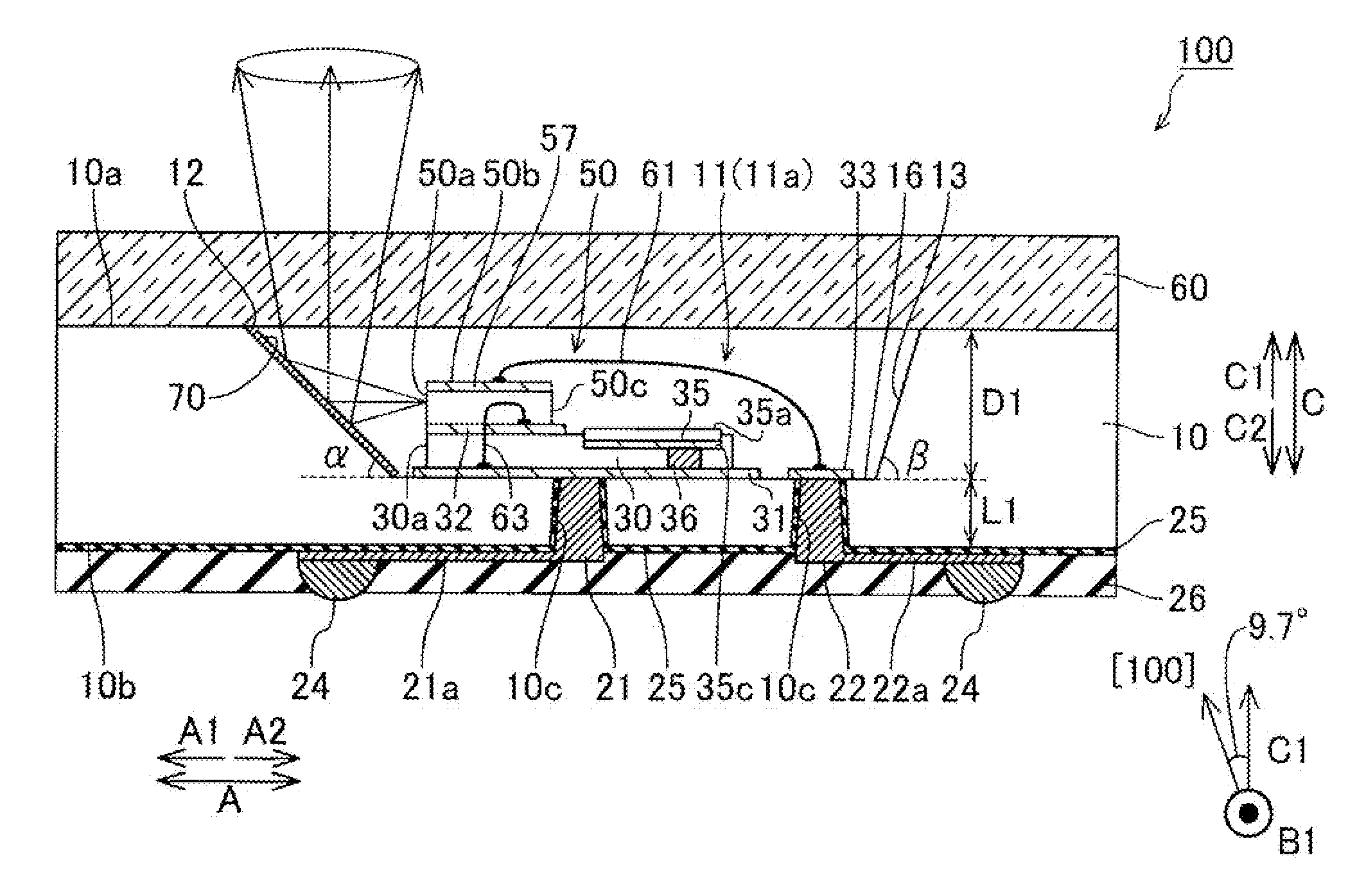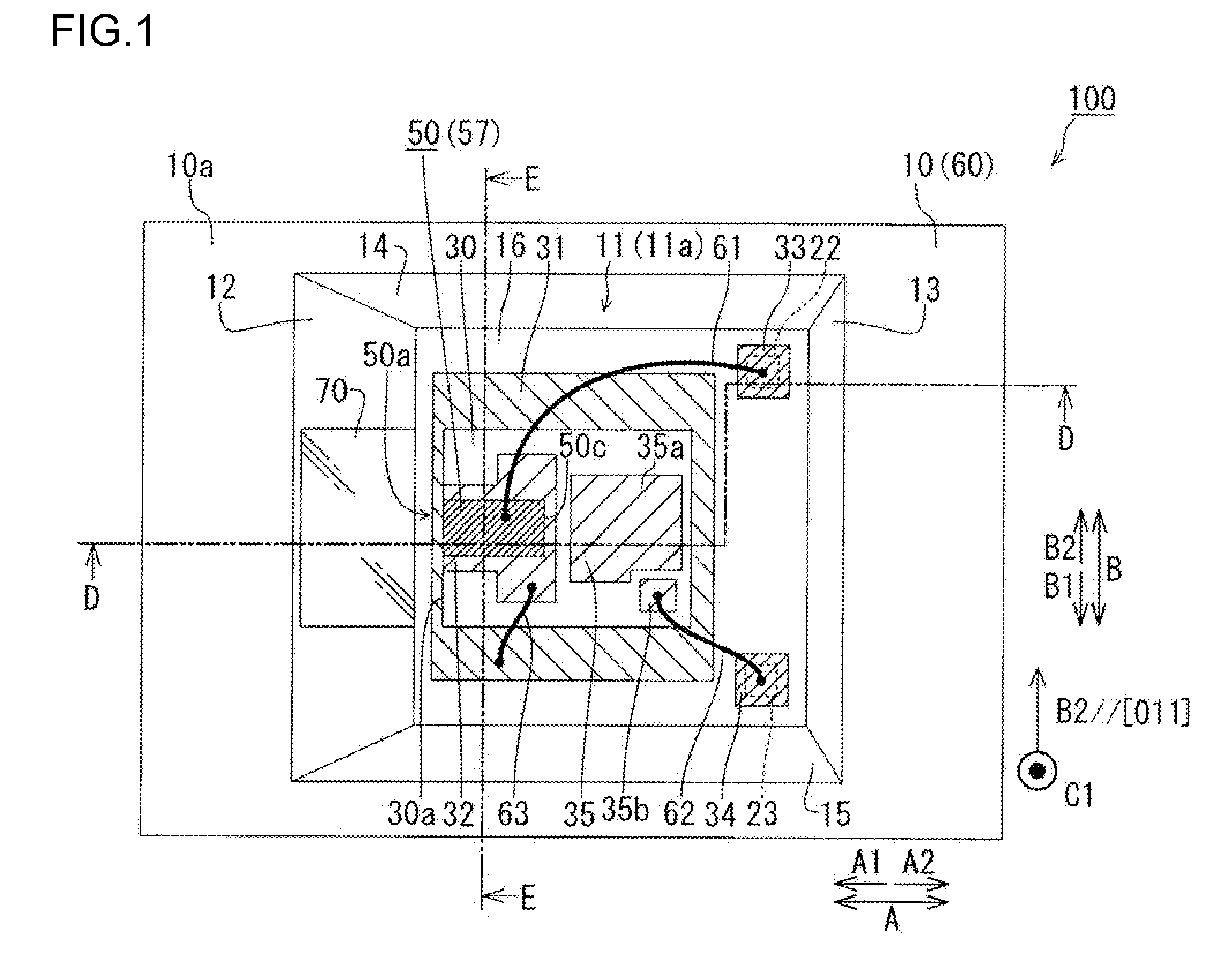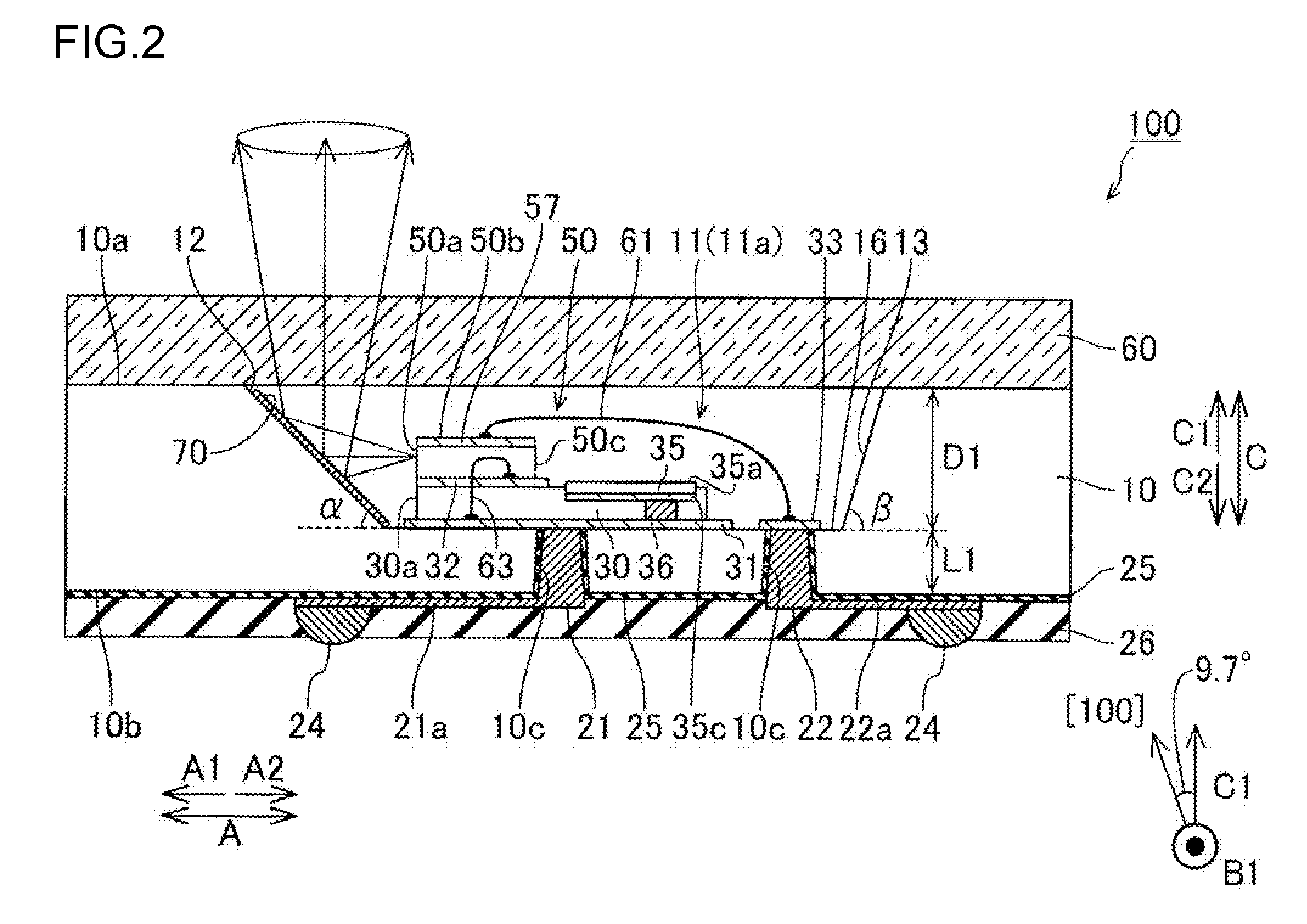Semiconductor laser device, optical pickup device and semiconductor device
a laser device and semiconductor technology, applied in semiconductor lasers, semiconductor/solid-state device details, semiconductor laser structural details, etc., can solve the problems of deteriorating laser element reliability, inability to easily block or seal off the opening of the silicon substrate with a translucent sealing member, and inability to achieve the effect of reducing the shift or displacement of the optical axis occurring in the emitted laser and sealing a packag
- Summary
- Abstract
- Description
- Claims
- Application Information
AI Technical Summary
Benefits of technology
Problems solved by technology
Method used
Image
Examples
first embodiment
[0075]Referring to FIG. 1 to FIG. 4, a description is first given of a semiconductor laser device 100 according to a first embodiment of the present invention. FIG. 2 is a cross-sectional view of FIG. 1 taken along line D-D, and FIG. 4 is a cross-sectional view of FIG. 1 taken along line E-E.
[0076]As shown in FIG. 2, the semiconductor laser device 100 according to the first embodiment of the present invention includes (1) a Si(100) substrate 10, having a high resistivity, in which a recess 11 dent from above (C1 side) toward below (C2 side) is formed, (2) a semiconductor laser element 50 placed on a bottom face 16 of the recess 11 via a submount (base) 30, and (3) a translucent sealing glass 60 for blocking an opening 11a of the recess 11 wherein the sealing glass 60 is mounted on a top face 10a of the Si(100) substrate 10. Note that the Si(100) substrate 10 is an example of “semiconductor substrate” in claim phraseology (WHAT IS CLAIMED), whereas the opening 11a is an example of “f...
second embodiment
[0116]A second embodiment is now described with reference to FIG. 2 and FIG. 11 to FIG. 13. In a semiconductor laser device 200, according to the second embodiment, which differs from the semiconductor laser device 100 of the above-described first embodiment, a description is given of a case where the back side of the semiconductor laser element 50 is directly fixed onto the surface region of a bottom face 216 of a recess 211. FIG. 12 is a cross-sectional view taken along line 2000-2000 of FIG. 11. Each component identical to that of the first embodiment is given the identical reference numeral in Figures.
[0117]As shown in FIG. 11, the semiconductor laser device 200 according to the second embodiment of the present invention includes (1) a Si(100) substrate 210, having a high resistivity, in which a recess 211 dent from above (C1 side) toward below (C2 side) is formed, (2) a semiconductor laser element 50 bonded to a surface of a bottom face 216 of the recess 211, and (3) a transluc...
third embodiment
[0129]A third embodiment is now described with reference to FIG. 14 to FIG. 16. In a semiconductor laser device 300, according to the third embodiment, which differs from the semiconductor laser device 100 of the above-described first embodiment, a description is given of a case where a recess 311 in which the semiconductor laser element 50 is placed is provided such that a photo solder resist 350, or an insulator, blocks an opening 301b (see FIG. 16) in one side (C2 side) of a Si(100) substrate 310 having through-holes 301. FIG. 15 is a cross-sectional view taken along line 3000-3000 of FIG. 14. Each component identical to that of the first embodiment is given the identical reference numeral in FIG. 14. Note that the Si(100) substrate 310 is an example of “semiconductor substrate” in claim phraseology (WHAT IS CLAIMED), whereas the photo solder resist 350 is an example of “support base” in claim phraseology. Also, the opening 301b is an example of “second opening” in claim phraseol...
PUM
 Login to View More
Login to View More Abstract
Description
Claims
Application Information
 Login to View More
Login to View More - R&D
- Intellectual Property
- Life Sciences
- Materials
- Tech Scout
- Unparalleled Data Quality
- Higher Quality Content
- 60% Fewer Hallucinations
Browse by: Latest US Patents, China's latest patents, Technical Efficacy Thesaurus, Application Domain, Technology Topic, Popular Technical Reports.
© 2025 PatSnap. All rights reserved.Legal|Privacy policy|Modern Slavery Act Transparency Statement|Sitemap|About US| Contact US: help@patsnap.com



